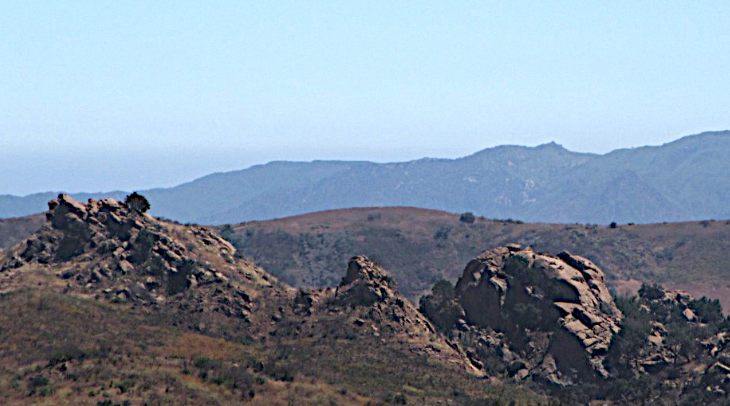CommentsCULTURAL PRESERVATION-On June 29, 2020, the Ventura County Cultural Heritage Board held a “Special Meeting” via the ZOOM platform. The item on this agenda of importance to me was Agenda Item 6b:
“Location: Proposed Burro Flats Cultural District, generally located at the Santa Susana Field Laboratory at 5800 Woolsey Canyon Road, Canoga Park, CA 91304 in the Santa Susana Mountain Range (unincorporated Ventura County). Action: Prepare a report that evaluates whether the proposed Burro Flats Cultural District meets the criteria for nomination to the National Register of Historic Places in accordance with the National Historic Preservation Act of 1966, as amended.”
The mandate of this Board was to determine whether this property – the Santa Susana Field Laboratory met the criteria to be determined a “Traditional Cultural Property.”
“A Traditional Cultural Property (TCP) is a property that is eligible for inclusion in the National Register of Historic Places (NRHP) based on its associations with the cultural practices, traditions, beliefs, lifeways, arts, crafts, or social institutions of a living community. TCPs are rooted in a traditional community’s history and are important in maintaining the continuing cultural identity of the community. The cultural practices or beliefs that give a TCP its significance are, in many cases, still observed at the time a TCP is considered for inclusion in the NRHP. Because of this, it is sometimes perceived that the practices or beliefs themselves, not the property, make up the TCP. While the beliefs or practices associated with a TCP are of central importance, the NRHP does not include intangible resources. The TCP must be a physical property or place--that is, a district, site, building, structure, or object.”
My husband, Bruce M. Rowe, Emeritus Professor of Anthropology at Los Angeles Pierce College and I were both on this call. Bruce and I have both gone through State of California Archaeological Site Stewardship Training through California State Parks. I particularly wanted to take this training as a Board member of the West Hills Neighborhood Council (WHNC). If a project occurred within a Neighborhood Council’s jurisdiction, we could recommend that these properties have archaeological surveys with Native American monitoring.
What is a UNESCO World Heritage Site and why do I think the Santa Susana Field Laboratory should be nominated as one?
“World Heritage - Heritage is our legacy from the past, what we live with today, and what we pass on to future generations. Our cultural and natural heritage are both irreplaceable sources of life and inspiration.”
When I think about a UNESCO site, I think about our travels to Lascaux in France to see one of the most famous rock art sites in the World – a UNESCO World Heritage Site.
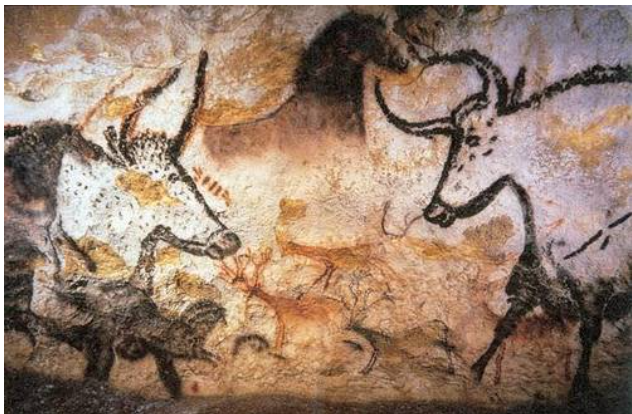
Cave Painting in Lascaux by Prof saxx (CC BY-NC-SA)
The Santa Susana Field Laboratory and the Burro Flats Historic Site:
I had studied Cultural and Physical Anthropology in college. As I began my involvement in the Santa Susana Field Laboratory – initially because of what people were talking about – concerns about offsite risk and potential cancer clusters in my community, I also began to be interested in the potential archaeological presence at the whole Santa Susana Field Laboratory. I first learned about the “Burro Flats” site when I started to read references to this site in technical documents. However, I did not understand the significance of this site until I learned that it was on the National Register of Historic Places.
Pictographs in the Burro Flats Painted Cave. Source: Niceley.
To me, the Burro Flats site, which is already on the National Historic Register for its archaeological, cultural, and religious significance, deserves the same recognition and preservation protection that is given to similar sites throughout the world.
To be a UNESCO World Heritage Site, a site must meet specific criteria.
“The Criteria for Selection To be included on the World Heritage List, sites must be of outstanding universal value and meet at least one out of ten selection criteria.”
I believe that the SSFL site meets multiple criteria for listing it as a World Heritage Site. The goal of giving the whole SSFL site this designation is to obligate all three Responsible Parties for the cleanup – as well as the agencies with involvement in the cleanup – the lead agency – California’s Department of Toxic Substance Control (DTSC), and the Los Angeles Regional Water Quality Control Board (WaterBoard) to require archaeological monitoring, Native American monitoring, and also protection of other environmental aspects of the site. By raising this site to this level of religious and cultural significance, we ideally protect the Native Plant species that the Native Americans recognize to be a part of their culture, as well as to protect the wildlife on the SSFL site. I recognize that the SSFL site must be cleaned up to protect any residents offsite from storm water runoff, etc. But I also want this site protected for use by future generations. If the SSFL site is not designated as a Traditional Cultural Property and even a UNESCO World Heritage Site prior to the cleanup, then we risk losing what may be other undiscovered sites while doing the cleanup. In cleaning the SSFL site, there is always the risk of inadvertent discoveries just beneath the soil, or even when we excavate existing structures.
The SSFL site is a part of a broader prehistoric as well as a historic archaeological district. How is this term archaeological or historic district defined by archaeologists?
“Section 106 Archaeology Guidance - Terms Defined
Definitions of terms used in the guidance
A historic property (or historic resource) is defined in the NHPA [54 U.S.C. § 300308] as any “prehistoric or historic district, site, building, structure, or object included in, or eligible for inclusion on, the National Register of Historic Places, including artifacts, records, and material remains related to such a property or resource.” Following National Register Bulletin No. 36, “Guidelines for Evaluating and Registering Archaeological Properties", an archaeological site is “a location that contains the physical evidence of past human behavior that allows for its interpretation.” The term archaeological site refers to those that are eligible for or are listed on the National Register (historic properties) as well as those that do not qualify for the National Register. The commonly used term cultural resource does not have a consistent or legal definition.”
“Indian tribes, NHOs, ethnic or religious groups, communities, professional and other organizations, or the public may ascribe a cultural, historical, or religious value to an archaeological site. The term value here refers to the site’s worth and importance to them and their experience, regardless of whether the site possesses National Register significance. For example, an archaeological site may be of historical or cultural value to the Mormons, or to an African-American community (See the African Burial Ground Sucess Story), or to the Order Sons of Italy in America, with or without its meeting the criteria for listing in the National Register.
Mitigation is a way to remedy or offset an adverse effect or a change in a historic property’s qualifying characteristics in such a way as to diminish its integrity. Treatment is the act of mitigating those effects, or how one goes about implementing the mitigation measure(s) agreed upon in consultation. Thus, a mitigation plan for the undertaking may contain several treatment plans, one for each property being adversely affected. Data recovery is a common mitigation measure that, through implementation of a treatment plan, retrieves the important information present within an archaeological site that makes it eligible before the site’s integrity is compromised or destroyed.”
The Chumash, Tataviam, Tongva, and other historic tribal communities in eastern Ventura County, Los Angeles County
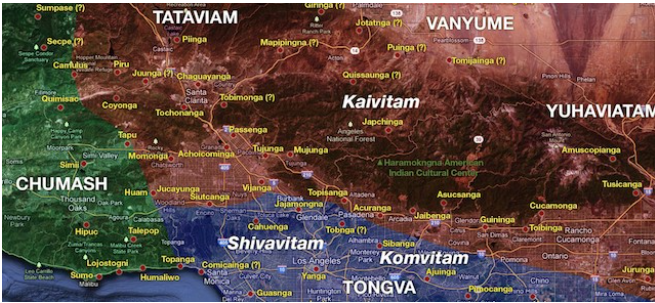
“The Ancient Roots of Malibu and Topanga Are Still Alive
Long before highways, film crews, and In ‘n Out, Los Angeles County was inhabited by hundreds of thousands of Native Americans. In what is now called Malibu and Topanga, the Chumash and the Tongva thrived for thousands of years, living off the land and sea.
The Chumash people once numbered in the tens of thousands and lived along the coast of California, from Malibu up to Paso Robles, a 7,000 square mile territory. Chumash means “seashell people,” and this tribe relied heavily on resources from the ocean. For nearly 4,000 years Malibu was inhabited by Chumash Indians. To put this in perspective; When the Jews were leaving Egypt, as chronicled in the Old Testament of the Bible, the Chumash were apparently just discovering the place we now call Malibu. They named the stretch of beach at the mouth of Malibu Creek “Humaliwo” or “the surf sounds loudly.” Humaliwo was an important center of Chumash life due to its proximity to the ocean and its lush greenery.”
In the above map, you should be able to see “Humaliwo” – today’s Malibu, Topanga, and Huam. Huam aka: Huwam was located in the area of today’s Bell Canyon and western West Hills area. You can see the Chumash range to today’s Thousand Oaks as well as to Simi Valley.
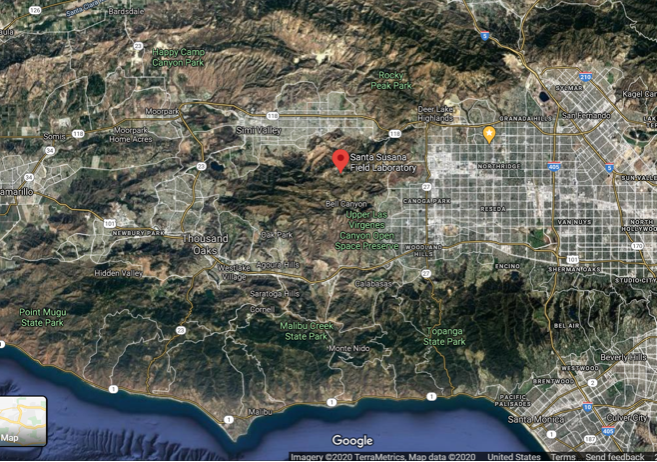
A Google map showing Malibu, Topanga, Bell Canyon, the Santa Susana Field Laboratory, Thousand Oaks, and Simi Valley.
To me, the concept that these prehistoric people and the ancestors to today’s local tribes ranged from the Channel Islands to Malibu, north to Topanga, further north to today’s Woodland Hills and Calabasas, as well as to Bell Canyon, West Hills, and as far north as the Santa Susana State Historic Park as well as west to Simi Valley and Thousand Oaks places this whole area into the prehistoric district referenced in the above criteria as a historic property that goes well beyond the SSFL site boundaries.
How I learned to place this site into its Prehistoric District context.
When I first became involved with the WHNC, I was attending meetings on Dayton Canyon, a property that has drainages from the Santa Susana Field Laboratory (SSFL) into the community of West Hills. I was taken by a local resident in 2008 to Dayton Canyon to look at a potential archaeological site. The landowner wanted to know if the site was registered, and he asked me and my husband to measure, photograph, and to record the location of this site. We worked with a Native American during this process – one that is a direct descendant of the Native Americans that lived here in recent times.
When my children were in elementary school, they had to learn the history of this area – both in terms of the Mission Period which I believe they studied around the 5th grade, but also the history of the people who lived here prior to the Mission Period. I would accompany my kid’s classes on field trips to the various museums and to the Missions in Ventura and the San Fernando Valley Mission. On these field trips, they would learn not only the history of the Missions, but also how the Native Americans of this area lived during that part of our California history.
When my sons were in the Boy Scouts, we visited Satwiwa where we were able to see the type of structure that the Chumash lived in historically as well as to meet the Tribal Elders that were there that day.
“For many years, the Santa Monica Mountains sustained the Chumash and Tongva / Gabrielino cultures. Sycamore Canyon, which cuts through Rancho Sierra Vista / Satwiwa and Point Mugu State Park, was part of a Chumash trade route. Satwiwa, which means "the bluffs," was the name of a nearby Chumash village. To reflect this heritage, Satwiwa Native American Indian Culture Center and Natural Area was established by the National Park Service in partnership with the Friends of Satwiwa.”
At a later point in time, my husband and I would visit and attend a Pow Wow at the Chumash Interpretive Center aka: the Chumash Indian Museum in Thousand Oaks.
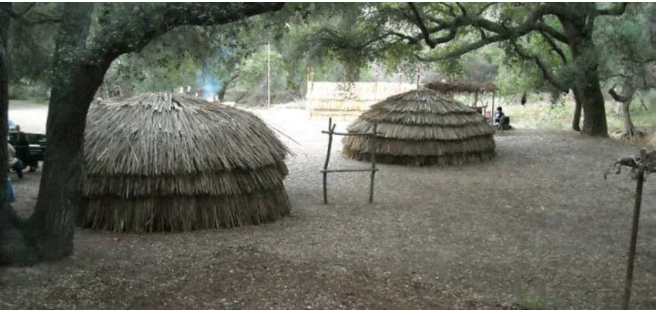
Photo taken from the Chumash Indian Museum website. [[[ https://www.venturacountymuseums.org/chumash-interpretive-center/ ]]] The image is of what are called “Tule Mat Lodges.”
“During planning for development of the Lang Ranch Specific Plan in the 1980s, significant Chumash cultural sites were discovered and a portion of the area was preserved as Oakbrook Park, and the County of Ventura agreed to construction of the Chumash Interpretive Center.
Many people from the Chumash community worked to make the museum a reality. Paul Varela (Chumash/Tataviam/Serrano) was selected as the first museum director when the Center opened at the end of 1994. It was envisioned as a place to maintain the Chumash culture, and to teach children and others about the culture.
Oakbrook Regional Park was transferred from the County of Ventura to the Conejo Park and Recreation District (CRPD) in 2002. The Oakbrook Park Chumash Indian Corporation, a 501(c)3 non-profit organization, continues to manage and operate the museum and surrounding 25 acres of interpretive trails in cooperation with the CRPD.”
The Santa Susana Field Laboratory and its Native American History
In 2008, when the Boeing Expert Storm Water Panel was recommending remediation of the Santa Susana Field Laboratory property to comply with Boeing’s National Pollution Discharge Elimination System (NPDES) permit, I asked if The Boeing Company had done a complete archaeological survey of their portion of the site. I was told no. When I asked why, I was told it was because no one had ever told them to do one. WaterBoard staff told me that NPDES issues were “exempt from CEQA,” and therefore an archaeological survey was not required. This is sad, because, in my opinion, there is the potential that an archaeological survey at the time could have revealed artifacts and archaeological sites that were unknown at the time.
In 2010, when the Federal Environmental Protection Agency (EPA) did their soil sampling for radionuclides at the SSFL site, they did hire archaeologists to do surveys, and they also hired Native American monitors to monitor where soil sampling or disturbances were going to be made.
In the meantime, the Federal Agencies (Department of Energy aka: DOE and NASA) that were responsible for the cleanup of this site were obligated to contact the closest Federally recognized tribe which is the Santa Ynez Band of Chumash.
The Santa Ynez Band of Chumash, the local tribal leaders, the California Native American Heritage Commission (NAHC), and the California State Historic Preservation Officer (SHPO) worked together to determine the significance of the SSFL site. The Santa Ynez Band later recognized the whole Santa Susana Field Laboratory as a Sacred Site to the local tribes which include the Ventureno Band of Chumash, the Fernandeno - Tataviam Band, and the Gabrielino - Tongva Band of Native Americans among others.
Information on the Ventureno Band of Chumash and part of its range can be found on this State Parks website.
Information on the Fernandeno – Tataviam Band can be found on their Tribal website.
Information regarding the Gabrielino –Tongva tribe can be found on their website.
During this process of the DOE and NASA consulting with the Santa Ynez Band of Chumash and the other local tribes, these agencies were obligated to work with the SHPO and to undergo a process to determine if there was any historical or cultural significance to the structures at the SSFL site or if there were archaeological sites, what was the process to preserve them. These agencies reached out to Stakeholders who were interested in being “Section 106 Consulting Parties” under the National Historic Preservation Act.
My husband and I became Section 106 Consulting Parties for NASA SSFL in 2012. In 2013, NASA’s Cultural Preservation Office educated us and others on what a “Traditional Cultural Property” was.
Later, NASA would publish their Final Environmental Impact Statement (FEIS) and a Record of Decision, and they would consider this site as a “Traditional Cultural Property” under that review and decision.
In the meantime, the DOE was also having their portion of the SSFL archeologically surveyed as well. They have also completed their FEIS, and they also have a Record of Decision.
The DOE is still in the Section 106 Consulting process.
What is the next step in this process? Should the Santa Susana Field Laboratory be considered a Traditional Cultural Property?
On July 28, 2020, the Ventura County Board of Supervisors will take up the recommendations of their Cultural Heritage Board recommendation from the June meeting.
“Based on the preceding evidence and analysis, ADOPT Staff’s recommendation that portions of the proposed Burro Flats Cultural District which include, but are not limited to, 117 sites and one object that are identified as contributors meet the criteria for the National Register of Historic Places;
Based on the requirements of Cultural Heritage Ordinance No. 4225 Section 1364-10 and the preceding evidence and analysis, ADOPT Staff’s recommendation that the proposed Burro Flats Cultural District nomination conflicts with the public health, safety, and general welfare to the extent the nomination impairs or impedes the legally mandated clean-up efforts at the proposed District; and RECOMMEND preservation efforts include a remediation plan to protect the formally recognized resources during clean-up activities.
DIRECT staff to TRANSMIT the Cultural Heritage Board recommendations and findings via a report to the County of Ventura Board of Supervisors for transmission to the California State Office of Historic Preservation in advance of the August 14, 2020 State Historical Resources Commission meeting.”
Conclusion:
- Interested residents and stakeholders should make an effort to submit comments in support of not only a Traditional Cultural Property, but to show that this location is not limited to the SSFL project site, but it is a part of a much larger prehistoric district for numerous tribes living today.
- The recommendation for an application as a UNESCO World Heritage Site should be made to the Ventura County Board of Supervisors for their July 28, 2020 Board meeting.
- The nomination of the SSFL site as a Traditional Cultural Site, a prehistoric district, and as a potential World Heritage Cultural Site should be submitted to the State of California for their
State Historical Resources Commission meeting on August 14, 2020.
This is the link for public comment guidelines to submit written comments to the Ventura County Board of Supervisors prior to their Board meeting.
“Comments in Writing Encouraged
- Members of the public may submit, and are encouraged to submit, comments in writing to the Board relating to any items of County or dependent special district business, whether on the Board agenda or otherwise. When written materials are provided to the Board during a meeting, an original and 10 copies are required. Such written comments will be distributed to members of the Board and considered and acted upon, or not acted upon, as the Board in its judgment may deem appropriate.”
California State Historical Resources Commission:
The Draft Nomination for the Burro Flats Site as a Traditional Cultural Property can be found here.
Information related to how to contact the California State Historical Resources Commission can be found on their website.
Please support the Traditional Cultural Property for the protection of the Santa Susana Field Laboratory site and the surrounding communities to protect the Sacred Lands, Religious Nature, and Cultural Aspects of this archaeologically rich site for future generations. Please recommend that the State support listing this site as a UNESCO World Heritage Site for its protection. Thank you.
(Chris Rowe, a former health care employee who has worked at Northridge Hospital, Tarzana Medical Center, and West Hills Hospital has a B.S. in Health Education. She is a 42-year resident of West Hills. She has written for the Los Angeles Daily News, RonKayeLA.org; OurLA.org; and CityWatch. She has a blog on the USC/ Annenberg Center for Health Journalism website and can be reached at [email protected]) Photo above: Bruce M. Rowe.

